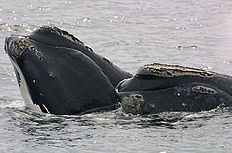Biodiversity of Ghana

The wildlife of Ghana is composed of its biodiversity of flora and fauna.
Biodiversity
Fungi
Ghana is home to a significant number of
Flora
The
Flora species diversity and
Fauna

Ghana has a vast array of fauna and they are of great significance, as some of Ghana's fauna have attained conservation status because of the current rate of decline in their number and distribution.[4] The fauna of the Ghanaian terrestrial ecosystem, comprise a diverse array of species including several of conservation concern.[4] Ghanaian records show that there is as many as 221 species of amphibians and reptiles, 724 species of birds, 225 mammalian species inhabiting Ghana; with 93 recorded to be inhabiting the Ghanaian savanna ecological zone.[4] As with floral diversity, prime locations for faunal diversity is located in the Ghanaian high forest uplands; accounting for 83% of the total number of butterfly species recorded in Ghana, where canopy stratification and micro-climatic differentiation have provided habitats and niches for specific faunal organisms.[4]
Keystone species such as
Ghana is an important country for dozens of
Gallery
-
Whalesin Ghana
-
Gazelles in Ghana
-
Black-winged kite in Ghana
References and notes
- ^ a b S.K. Ackuaku, P.K. Baidoo. "Pathogenicity of Five Fungal Species Isolated From Eldana Saccharina (Walker) (Lepidoptera: Pyralidae)". ajol.info. African Journal of Library, Archives and Information Science (African Journals OnLine). Retrieved 15 June 2013.
- ^ a b "Ghana overview – Convention on Biological Diversity". cbd.int. Convention on Biological Diversity. Retrieved 15 June 2013.
- ^ ISBN 9781139428651. Retrieved 15 June 2013.
- ^ a b c d e f g h i j k l Ntiamoa-Baidu et al, 2001; Ntiamoa-Baidu et al, 2000 a & b. Retrieved 15 June 2013.
- ^ a b BirdLife International, 2000. Retrieved 15 June 2013.
- ^ Smit and Peirsma, 1989; Ntiamoa-Baidu et al, 2001. Retrieved 15 June 2013.









